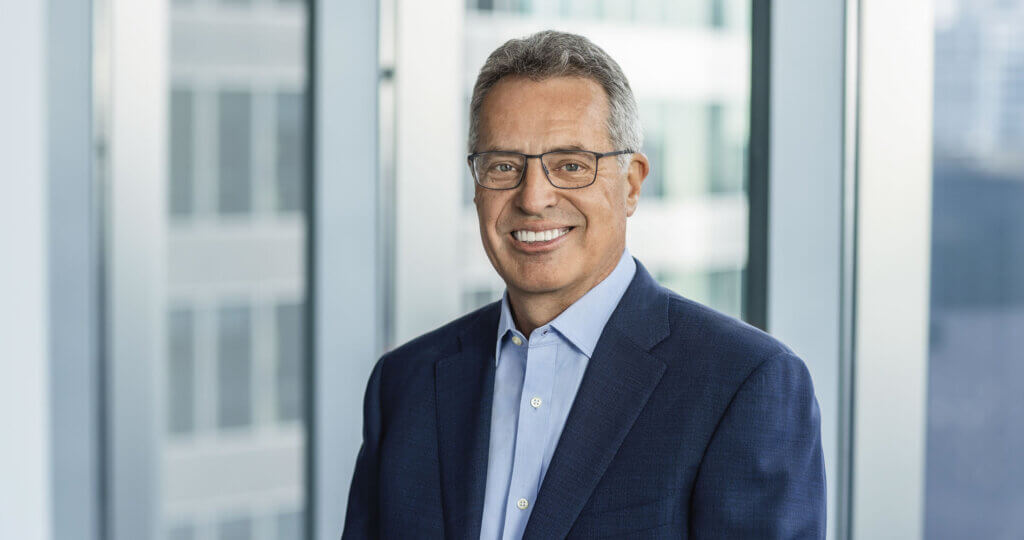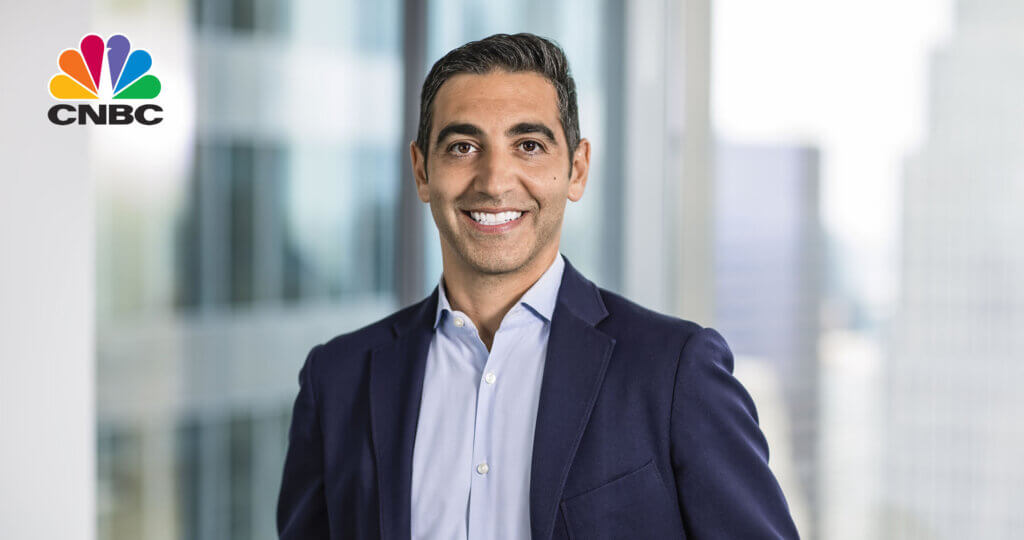My own thinking has changed drastically from 35 years ago when I was taught to favor tangible assets and to shun businesses whose value depended largely on economic goodwill.
-Warren Buffett
If you were paging through Value Line in February looking for cheap stocks, it would have been easy to skip right past Gartner. Value Line says, “Gartner Inc. is the world’s leading information technology research and advisory company…” You would have quickly seen that it is a database-driven, asset-light business that would be expected to command a higher than market P/E ratio. Despite the stock falling from $142 to $119, its P/E was still 31 times expected 2018 earnings and its book value was only $2 per share. Gartner didn’t look like a value stock and, in fact, it was even included in the Russell 1000 Growth Index. But last quarter we bought it for the Oakmark Fund. So, it’s fair to ask: has Oakmark changed, or does Gartner somehow meet our value criteria?
At Oakmark, we are long-term investors. We attempt to identify growing businesses that are managed to benefit their shareholders. We will purchase stock in those businesses only when priced substantially below our estimate of intrinsic value. After purchase, we patiently wait for the gap between stock price and intrinsic value to close.
A closer look reveals that Gartner stock fell when management opted to substantially increase selling and marketing expenses to pursue accelerated organic growth, which in turn decreased the company’s reported earnings. The way GAAP (generally accepted accounting principles) works, because the future benefit of a marketing expense is uncertain, the cost is immediately expensed. But at a company like Gartner, these marketing expenses could easily be seen as long-term investments in company growth. That’s because a Gartner customer tends to remain with the company for a long time—a little more than six years, on average. So we adjusted the sales and marketing expenses to reflect a six-year life, just like GAAP would treat the purchase of a machine that was expected to last six years. With that one adjustment, Gartner’s expected EPS increased by almost $3. Using our adjusted earnings, which we believe reflect a more realistic view of those intangible assets, Gartner appears to be priced as just an ordinary company. And, as we have said many times, buying an extraordinary company at an ordinary price is value investing at its finest.
Throughout Oakmark’s history, we’ve been on the lookout for situations where GAAP obscures economic value. Though value investing has always implied buying at a discount to value, the early descriptions of value relied more on assets than earnings. In 1934, Ben Graham and David Dodd wrote Security Analysis, which was quickly adopted as the Bible of value investing. In it, Graham explains his idea of only investing when he had a “margin of safety:” he only purchases a stock when it is priced at a large discount to a company’s intrinsic value. The concept remains a core principle of value investing today, even though the idea is almost 100 years old. Then, influenced by just having been through a depression, a company’s intrinsic value was defined as its liquidation value, and Graham proposed the following formula for computing it: start with cash; add accounts receivables, discounted by 10-25%; add inventory, discounted by 25-50%; add all other assets, discounted by 50-100%; and then deduct all liabilities. A stock passed his margin of safety test only if it sold for a large discount to this estimated liquidation value.
Over the next 40 years, stock prices were generally quite tightly tied to their book values and patient investors could often find companies that were out of favor, trading below estimated liquidation value. It was an asset-heavy economy, which made it appropriate to value businesses based on their tangible assets. In fact, as recently as 1975, 83% of the stock market value of the average company was represented by its tangible book value. In an economy where value was derived from fixed assets, it was hard to maintain competitive advantage: If you earned unusually high returns, others would duplicate your fixed assets and your advantage disappeared. That made it difficult for companies temporarily trading at large premiums to book value to sustain their high stock prices. So, an effective investment approach was to buy the stocks priced at discounts to book value and then patiently wait for reversion to the mean.
But, as the economy has become more asset-light, intangible assets—such as brand names, customer lists, R&D spending and patents—have become more important. Today, the relative importance of tangible assets compared to intangibles has completely flip-flopped from what it was 40 years ago. Intangibles now account for over 80% of the average company’s market value. But much like Graham, GAAP doesn’t even attempt to value those assets.
By the early 1980s, the Berkshire Hathaway investment portfolio, managed by Warren Buffett, looked nothing like the low price-to-book investments favored by his teacher Ben Graham. The portfolio included General Foods, RJ Reynolds, Time Inc. and Washington Post Co. When asked about the apparently high prices he paid for those companies relative to their book value, Buffett was fond of saying that their most valuable assets—their brand names—were not even on their balance sheets. The Buffett quote above, citing the decreasing importance of tangible assets in determining business value, sounds as timely today as it did when it appeared in Berkshire’s 1983 Annual Report. What Buffett figured out earlier than most value investors was that conservative accounting rules overlooked the value of intangible assets. In turn, book value didn’t fully reflect the economic value of businesses with strong brands.
For companies in the S&P 500 today, the correlation between stock price and tangible book value has become quite small, just 14%. This is a very big change from 25 years ago, when that correlation was 71%—or 5x stronger than it is now. Unlike 25 years ago, knowing the book value of a company today gives little clue as to its stock price. Investors who have relied primarily on a price-to-book mean reversion strategy have had disappointing performance for the past decade. Some even feel they “are due” for an extended positive run. That would indeed be the case if irrational exuberance were the reason that book value is currently disconnected from stock prices.
But we don’t see anything irrational about it. If book value still determined earnings power, we would expect P/E ratios to be as widely distributed as price-to-book ratios. However, that isn’t the case. Today, the P/E distribution is narrower than it was 25 years ago. That shows that intangible assets are producing earnings and, therefore, investors have been acting rationally by attributing significant value to them. At Oakmark, we believe that the relative importance of intangible assets is more likely to continue than to reverse. As such, we think a portfolio of strictly low price-to-book stocks will continue to produce disappointing results.
Most value investors have come to realize that although book value can still be a useful metric in certain situations, such as analyzing a bank or a utility, it does not offer much insight for most companies. For this reason, book value is no longer used by most investors as a definitive indicator of economic value. Despite that, in our view, many investors have not yet considered what this means for the income statement. Back when GAAP book value was still closely tied to economic value, a company’s annual income statement provided a pretty good approximation of the economic value added in that year. But now that economic value is not closely tied to book value, the income statement no longer provides a reliable indication of the value a company created in a particular year.
Since Oakmark’s 1991 inception, we have sought out investments whose economic value was not easily seen in the simple GAAP metrics of net income and book value. Over that time, like Buffett, we’ve owned a lot of packaged food companies when we thought increased brand advertising was understating earnings. (Interestingly, the opposite condition is present today: Some companies have slashed advertising, increasing their GAAP earnings, but still benefit from historical spending that was previously expensed.) We owned cable TV distributors that reported net losses and negative book value while rapidly increasing their subscribers. (As with Gartner, customer acquisition costs were an immediate hit to their income, but their customers were long-lived.) We owned high-growth biotech companies that were selling at lower P/Es than mature pharmaceutical companies–once we treated their R&D expenditures as long-term investments.
As intangibles have grown in importance, so has the number of our holdings for which we adjust earnings to better reflect our view of intangible values. That has led Oakmark to invest in more companies generally owned by growth investors, such as Alphabet, Facebook, Gartner, Netflix and Regeneron. The thought process is no different than what led us to own food and cable stocks early in Oakmark’s life. Today, it simply applies to more companies.
Regardless of the changing metrics that determine a company’s value, the main concepts of value investing are the same today as 84 years ago when Security Analysis was first published:
-Investors still follow fads, get emotional and overreact,
-Which means stock prices sometimes decouple from intrinsic value,
-Allowing patient investors to invest when price is below value,
-Which creates a margin of safety.
So how can investors today determine which mutual funds are rigorously applying a disciplined value investing process and which ones are simply following trends? The relevant metrics for that have evolved, too. Because we rarely find price-to-book a useful statistic for estimating intrinsic value, our portfolios often don’t look cheap on that metric. Low P/E ratios are frequently, but certainly not always, an indication of value. Though our portfolios still typically have a lower P/E than the market, we are more frequently investing in “exceptions” where the GAAP P/E looks expensive.
For those “exceptions,” true value investors should be able to explain how they’re calculating their margin of safety: What are they getting that they don’t think they’re paying for? As an example, let’s look at the largest holding in both Oakmark and Oakmark Select, Alphabet, a stock that is primarily owned by growth managers. Alphabet’s 2018 P/E is 26 times consensus estimates, which to us seems to be in the right ballpark given the expected growth from its search business. However, the company’s $115 billion in cash, YouTube and other bets (including Waymo), in total, contribute nothing to our estimate of current earnings, despite having tremendous value. That’s what we’re getting for free, which creates our margin of safety.
At Oakmark, we commit time to writing these pieces because we want to help our shareholders understand how we think about investing. In a world where business value rests primarily on intangible assets, it’s getting harder to use a style box to understand a mutual fund’s investment approach. That’s why it’s more important than ever to spend time reading commentaries or watching interviews. They can explain a fund’s investment philosophy far better than a price-to-book ratio ever will.
The securities mentioned above comprise the following percentages of the Oakmark Fund’s total net assets as of 06/30/18: Gartner, Inc. 1.0%, Berkshire Hathaway, Inc. 0%, General Mills, Inc. 0%, British American Tobacco PLC (ADR) 0%, Meredith Corp. 0%, Graham Holdings Co. 0%, Facebook, Inc. 1.1%, Netflix, Inc. 2.5%, Regeneron Pharmaceuticals 2.1%, Alphabet Inc., Class C 3.0%, and Alphabet Inc., Class A 0.5%.
The securities mentioned above comprise the following percentages of the Oakmark Select Fund’s total net assets as 06/30/18: Gartner, Inc. 0%, Berkshire Hathaway, Inc. 0%, General Mills, Inc. 0%, British American Tobacco PLC (ADR) 0%, Meredith Corp. 0%, Graham Holdings Co. 0%, Facebook, Inc. 0%, Netflix, Inc. 0%, Regeneron Pharmaceuticals 3.4%, Alphabet Inc., Class C 8.2% and Alphabet Inc., Class A 1.4%.
Portfolio holdings are subject to change without notice and are not intended as recommendations of individual stocks.
Access the full list of holdings for the Oakmark Fund as of the most recent quarter-end.
Access the full list of holdings for the Oakmark Select Fund as of the most recent quarter-end.
The Value Line Investment Survey consists of professional research and recommendations on approximately 1,700 stocks. According to Value Line, this represents approximately 95% of the trading volume of all stocks traded in U.S. markets.
Buffett, Warren. “Chairman’s Letter – 1983.” Berkshire Hathaway Inc. March 14, 1984. Accessed June, 2018. http://www.berkshirehathaway.com/letters/1983.html.
The Russell 1000® Growth Index measures the performance of the large-cap growth segment of the U.S. equity universe. It includes those Russell 1000® companies with higher price-to-book ratios and higher expected growth values. This index is unmanaged and investors cannot invest directly in this index.
The Price-Earnings Ratio (“P/E”) is the most common measure of the expensiveness of a stock.
EPS refers to Earnings Per Share and is calculated by dividing total earnings by the number of shares outstanding.
Graham, Benjamin, and David Dodd. Security Analysis. New York, NY.: McGraw-Hill Book Company, 1934.
The S&P 500 Total Return Index is a float-adjusted, capitalization-weighted index of 500 U.S. large capitalization stocks representing all major industries. It is a widely recognized index of broad, U.S. equity market performance. Returns reflect the reinvestment of dividends. This index is unmanaged and investors cannot invest directly in this index.
The Oakmark Fund’s portfolio tends to be invested in a relatively small number of stocks. As a result, the appreciation or depreciation of any one security held by the Fund will have a greater impact on the Fund’s net asset value than it would if the Fund invested in a larger number of securities. Although that strategy has the potential to generate attractive returns over time, it also increases the Fund’s volatility.
Oakmark Select Fund: The stocks of medium-sized companies tend to be more volatile than those of large companies and have underperformed the stocks of small and large companies during some periods.
Because the Oakmark Select Fund is non-diversified, the performance of each holding will have a greater impact on the Fund’s total return, and may make the Fund’s returns more volatile than a more diversified fund.
The discussion of the Funds’ investments and investment strategy (including current investment themes, the portfolio managers’ research and investment process, and portfolio characteristics) represents the Funds’ investments and the views of the portfolio managers and Harris Associates L.P., the Funds’ investment adviser, at the time of this letter, and are subject to change without notice.
All information provided is as of 06/30/2018 unless otherwise specified.







